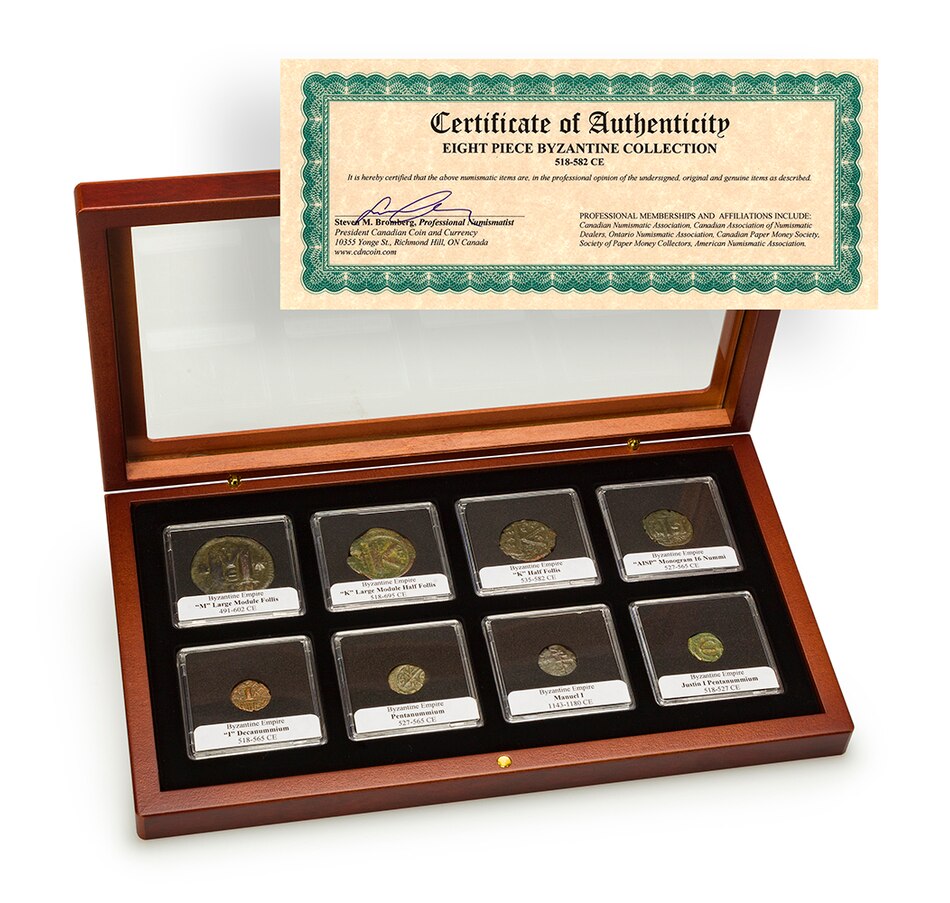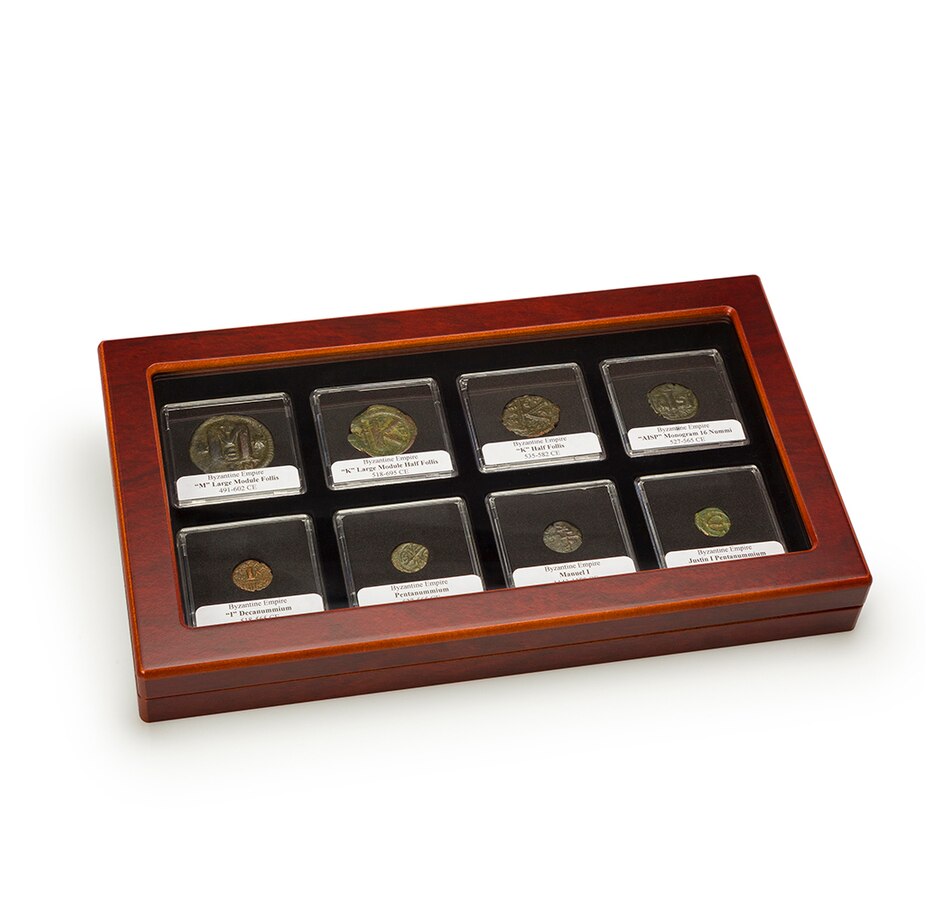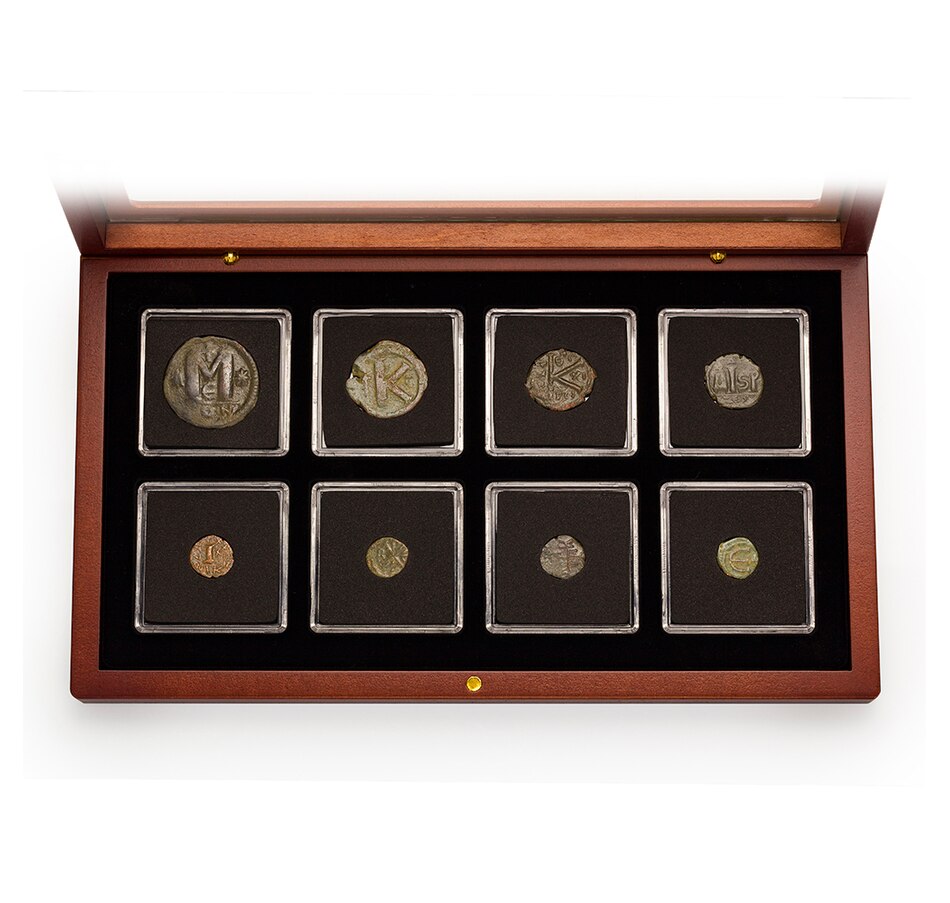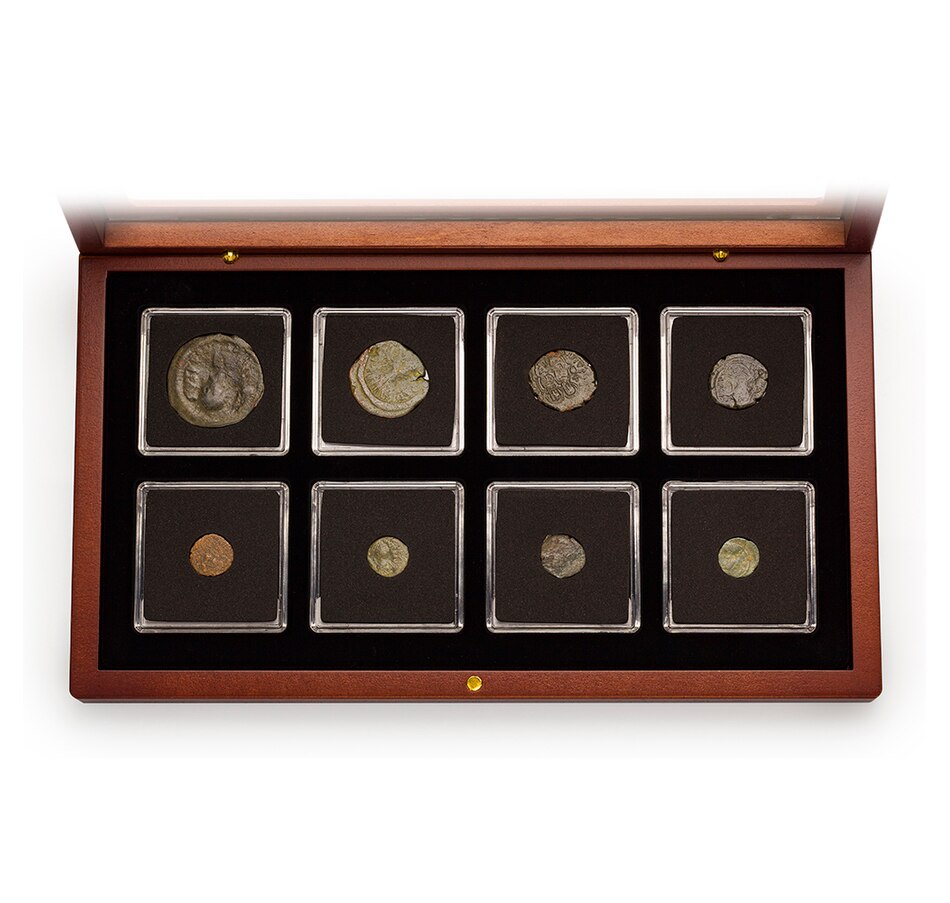Eight-Piece Premium Quality Early Byzantine Collection, 491–1180 CE
711-416
$499.95
Shipping: $7.99
or
12 Payments of $41.66
with
Product Overview
Following the fall of the Roman Empire and the rise of what became known as the Byzantine Empire, much of the technology and artistic skills of minting were lost, and coinage took on a much cruder appearance. The Christian Church had a tight control over most of Europe, and coinage usually featured religious themes and images. However, one thing that the Byzantine emperors did effectively was to create and maintain standardized coinage. While inflation reduced the size and metal content of denominations over a long period of time, standard denominations were issued with logical fractional parts, and commerce was facilitated reasonably well. Interestingly, the scarcest surviving denominations are in fact the smallest pieces rather than the larger, higher denominations.
This premium-quality collection showcases the money of the Byzantine Empire and features eight different denominations or major denomination types used from 491 CE through to 1180 CE. All of the following coins are included:
• "M" large module follis, 491–602 CE, 40 nummi
• "K" large module half follis, 518–695 CE, 20 nummi, single bust type
• "K" small module half follis, 535–582, 20 nummi, joint busts of Tiberius and his wife Anastasia
• "AISP" monogram 16 nummi, 527–565 CE, 16 nummi reign of Justin I
• "I" small module decanummium, 518–565, 10 nummi
• Small module pentanummium, 527–565, 5 nummi, epsilon letter
• Pentanummium Justin I, 518–527, "CHI-RHO" monogram
• Billon trachy (scyphate) Manuel I, 1143–1180, Christian cross on steps symbol
The coins are presented in a custom mahogany finish case, together with a certificate of authenticity.
The Byzantine Empire
Following the steady technological, social and philosophical advancements of Ancient Greece and the golden days of the Roman Empire, the Western world entered into an era of regression starting with the fragmenting of the Roman Empire in the fifth century. By the sixth century CE, the area that was ancient Rome had become what we now call the Byzantine Empire. The empire continued to ebb and flow in a wave of decline and recovery for a millennium after the disjunction of the Western Roman Empire, until it crumbled to the Ottoman Turks in 1453.
Early Byzantine coins continued to employ most late Roman conventions. The obverse continued to feature the emperor, now full face rather than in profile, although some coins featured the "Emperor of Emperors," Jesus Christ. The Roman gods on the reverse were replaced with Christian theistic symbols such as the cross, a Victory symbol or an angel. However, while coins of the ancient Greeks and Romans were often designed and struck with fine detail and artistry, this technology and artistic talent was largely lost through the Byzantine era. Most newly struck Byzantine coins would look much inferior to a well-worn Roman coin struck a few hundred years earlier. Attractive examples of these crudely struck coins are extremely scarce, and highly sought-after by collectors.
Bronze coinage was comprised primarily of thick bronzes in denominations of 5, 10, 20 and 40 nummi. The letters on the bronze coins use a Greek numbering system (M = 40 nummi, K = 20 nummi, I = 10 nummi, E = 5 nummi), clearly indicating the denomination on the face of the coin.
Includes:
• Premium-Quality Eight-Piece Byzantine Coin Denomination Collection
Warranty Information:
This product comes with a 30-day warranty through TSC.
This premium-quality collection showcases the money of the Byzantine Empire and features eight different denominations or major denomination types used from 491 CE through to 1180 CE. All of the following coins are included:
• "M" large module follis, 491–602 CE, 40 nummi
• "K" large module half follis, 518–695 CE, 20 nummi, single bust type
• "K" small module half follis, 535–582, 20 nummi, joint busts of Tiberius and his wife Anastasia
• "AISP" monogram 16 nummi, 527–565 CE, 16 nummi reign of Justin I
• "I" small module decanummium, 518–565, 10 nummi
• Small module pentanummium, 527–565, 5 nummi, epsilon letter
• Pentanummium Justin I, 518–527, "CHI-RHO" monogram
• Billon trachy (scyphate) Manuel I, 1143–1180, Christian cross on steps symbol
The coins are presented in a custom mahogany finish case, together with a certificate of authenticity.
The Byzantine Empire
Following the steady technological, social and philosophical advancements of Ancient Greece and the golden days of the Roman Empire, the Western world entered into an era of regression starting with the fragmenting of the Roman Empire in the fifth century. By the sixth century CE, the area that was ancient Rome had become what we now call the Byzantine Empire. The empire continued to ebb and flow in a wave of decline and recovery for a millennium after the disjunction of the Western Roman Empire, until it crumbled to the Ottoman Turks in 1453.
Early Byzantine coins continued to employ most late Roman conventions. The obverse continued to feature the emperor, now full face rather than in profile, although some coins featured the "Emperor of Emperors," Jesus Christ. The Roman gods on the reverse were replaced with Christian theistic symbols such as the cross, a Victory symbol or an angel. However, while coins of the ancient Greeks and Romans were often designed and struck with fine detail and artistry, this technology and artistic talent was largely lost through the Byzantine era. Most newly struck Byzantine coins would look much inferior to a well-worn Roman coin struck a few hundred years earlier. Attractive examples of these crudely struck coins are extremely scarce, and highly sought-after by collectors.
Bronze coinage was comprised primarily of thick bronzes in denominations of 5, 10, 20 and 40 nummi. The letters on the bronze coins use a Greek numbering system (M = 40 nummi, K = 20 nummi, I = 10 nummi, E = 5 nummi), clearly indicating the denomination on the face of the coin.
Includes:
• Premium-Quality Eight-Piece Byzantine Coin Denomination Collection
Warranty Information:
This product comes with a 30-day warranty through TSC.
About the Brand
Learn More






